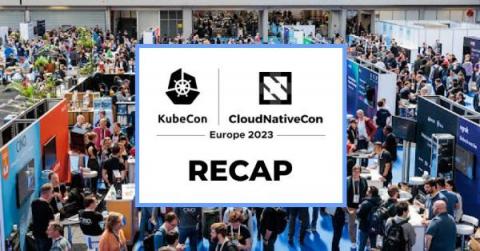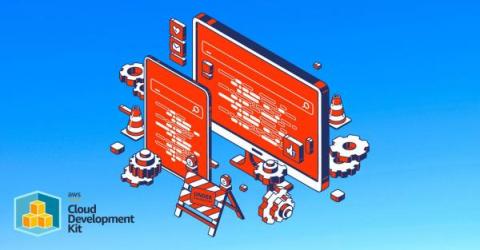Operations | Monitoring | ITSM | DevOps | Cloud
April 2023
Azure Cost Analysis
How to throw custom exceptions inside Logic Apps: Using default capabilities - Extract failure information (Part II)
Kubecon + CloudNativeCon Europe 2023 Recap
KubeCon Amsterdam was an incredible gathering of like-minded professionals, bringing together devops, software engineers, vendors, and cloud technology enthusiasts from around the world. This year’s event was the biggest KubeCon + CloudNativeCon ever, with a sold-out attendee list of 10,000 strong. The sheer scale of the event was a testament to the growing popularity of cloud native technology and the vibrant community that supports it.
Catchpoint Invests to Advance API, Cloud Functions, and Microservices Monitoring
How to get Azure Data Factory Pipeline Failure Notification?
Debugging Containerized React Apps
In your lifetime as a frontend developer that works with React, you must have come across several issues with debugging a containerized React application. I bet you can relate, you’re certainly not alone. Containerization has become an integral part of best practices for software development teams that want to create, test and deploy applications quickly and efficiently. However, despite its advantages, it also comes with new challenges for debugging and troubleshooting applications.
Lumigo Product Training: Actionable Alerts
Migrating a Web App to AWS Lambda with Lambda Web Adapter
As developers, we all seek to build web applications that can scale seamlessly, adapt to changing needs and do so without incurring excessive costs. One way to achieve this is by migrating web applications to AWS Lambda, which can provide scalability, flexibility, and cost savings. To make this process even easier, AWS provides the Lambda web adapter, a simple and efficient tool that enables you to migrate your web apps quickly.
Distributed Tracing for AWS CDK Applications
The AWS CDK lets users build as Infrastructure as Code (IaC) reliable, scalable, and cost-effective applications in their cloud environments. With the AWS CDK, developers can use various supported programming languages to create constructs (reusable cloud components) and compose them together into stacks and applications.
How to throw custom exceptions inside Logic Apps: Using default capabilities (Part I)
Announcing support for monitoring AWS Lambda Function URLs with Datadog
AWS Lambda Function URLs make it even easier to create AWS Lambda functions that can be accessed and triggered by using HTTP/S requests, which is key for building serverless applications that are connected to and invoked from the web. Now you can generate a URL in one click that points to a specified Lambda function. Then, any HTTP/S request that a Function URL receives will trigger the Lambda function it’s assigned to.
Return large objects with AWS Lambda's new Streaming Response
Lambda has a size limit of 6MB on request and response payloads for synchronous invocations. This affects API functions and how much data you are able to send and receive from a Lambda-backed API endpoint. I have previously written about several workarounds on the request payload limit. But sometimes you also need to return a payload bigger than 6MB. For example, PDF or image files.
Logic App Best Practices, Tips, and Tricks: #27 How to embed HTML images into emails
Troubleshooting Intermittent Failure in Amazon ECS apps
A distributed system is a system whose components are located on different networked computers, which communicate and coordinate their actions by passing messages to one another. The components interact in a decentralized manner and work together to achieve a common goal. Working with distributed systems is challenging, because failure often spreads between components and debugging across multiple components is difficult and time-consuming.
Serverless Architecture Explained: Easier, Cheaper, FaaS vs BaaS & Evolving Compute Needs
Azure Resource Monitoring: The key method for Holistic Monitoring
Quantum Entangled Observability
As the world of technology continues to evolve, the demand for cutting-edge solutions to monitor and optimize system performance has never been higher. Today, we’re excited to introduce a revolutionary new concept in observability: Quantum Entangled Observability (QEO). This ground-breaking method leverages the peculiar properties of quantum mechanics to provide unparalleled insights into your systems’ inner workings.



















